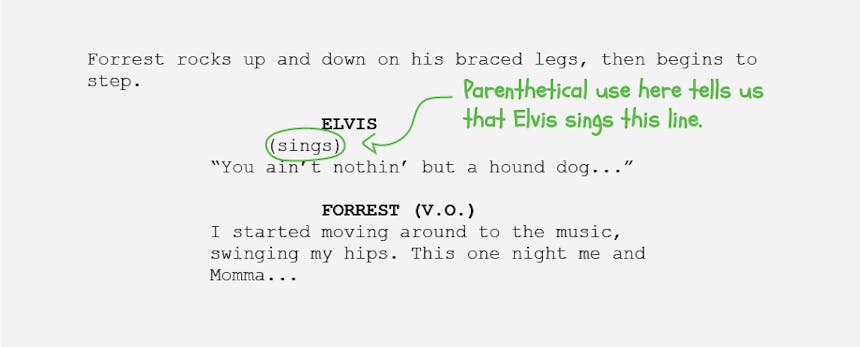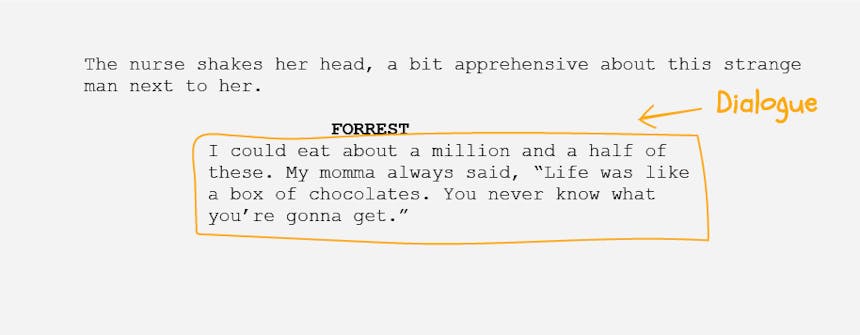With one click
Export a perfectly formatted traditional script.
Are you new to screenwriting? Or maybe just want a refresher on some of the basics of formatting? You have come to the right place! In today's blog post, we are going to start at the beginning--covering the very basics of screenplay formatting including font size, margins, and the 5 main elements of your screenplay.
Formatting is essential if you ever plan to try and sell your screenplay. Formatting your screenplay correctly is one of the easiest ways to make a good first impression and maximize your chances of getting your screenplay read.
Most screenwriting software, including our new, upcoming SoCreate platform, will handle the formatting for you, but just in case you ever find yourself needing to make manual edits (or using a typewriter), here are some of the basics.
Export a perfectly formatted traditional script.


Always use 12-point Courier! Slight variations including Courier Prime or Courier New are also acceptable.
Margin should be adjusted to these measurements:
Left Margin: 1.5"
Right Margin: 1.0"
Top and Bottom Margins: 1.0"
Right align your page numbers in the page header. Nothing else should live in the header of your page except for the page number. You do not need to include the page number on the first page of your screenplay.
Now that you've got your page formatting set, it's time to start letting those ideas flow. Start your first page out by typing "FADE IN" in all caps followed by a colon (:).
The slug line, also known as the master scene heading, occurs at the beginning of each new scene in your screenplay. This can be broken up into 3 parts:
Inside or Outside [Inside locations are denoted as INT (Interior) and Outside Locations as EXT (Exterior)]
The Location
The Time of Day

Notice that all of the slug line is written in capital letters.
Now that we have our scene slug line, we need to tell the reader what's happening in the scene, what characters are doing, and what sounds are heard. Action descriptions should be kept as succinct as possible. Do not bog readers down with unnecessary details about your scene.
Character names should be capitalized in action descriptions the first time they are introduced. Once you have introduced them, their names can be written normally.
Visual or special effects.
Sounds to be captured in that action scene.
The first time that important props, wardrobe, or other details are mentioned.
Anything else that the writer wants to draw readers' attention to.
Here's an easy one--which character is speaking? The character name is always capitalized and indented 3.5" from the left margin. Remember to be consistent with character names throughout your screenplay. If you have a character "JOHN DOE," make sure that each time he speaks, you title his dialogue with "JOHN DOE" and not "JOHN," "MR. DOE," etc.

Sometimes you may need to modify your Character Name and Character Extension. The two extensions are:
O.S. for off-screen: This is used when a character who is physically present in a scene speaks but is not visible to viewers.
V.O. for voice over: This is used when a character is not physically present in the visible scene but speaks lines. This could be someone speaking on the other end of a telephone or perhaps speaking while reflecting over a flashback scene.

This is the place where you can add a bit more instruction to the way that an actor should speak their line. Parentheticals are indented to 3.0". Be sure to use these sparingly! Not every line needs this sort of direction.

Last, but certainly not least, dialogue: what your characters actually say. Dialogue should be indented to 2.5" and only extend as far as 5.5".

There you have it--the very, VERY basics of screenplay formatting. Of course, there are many other formatting elements that are not covered in this post. If there is one in particular you would like to learn more about, comment below and we'll try to cover it in a future post. For more information, check out the following sources that we've used to help better our own understanding of screenplay formatting:
Screenplay formatting notes taken on Forrest Gump Screenplay written by Eric Roth.
Cheers to you, writers!
